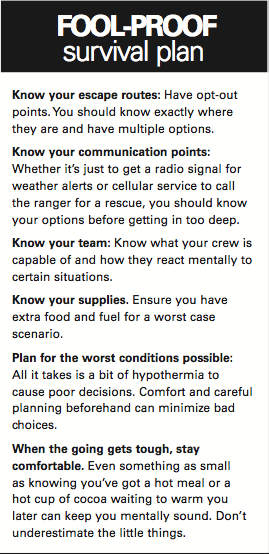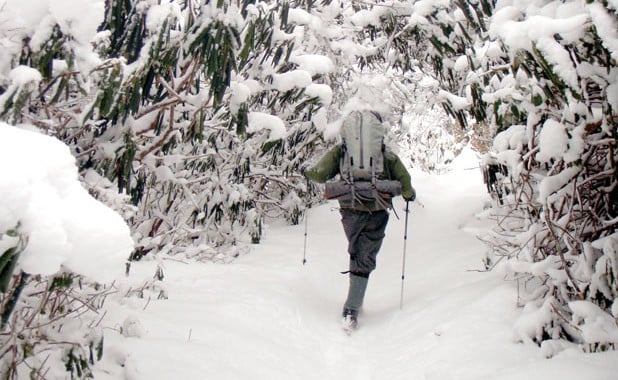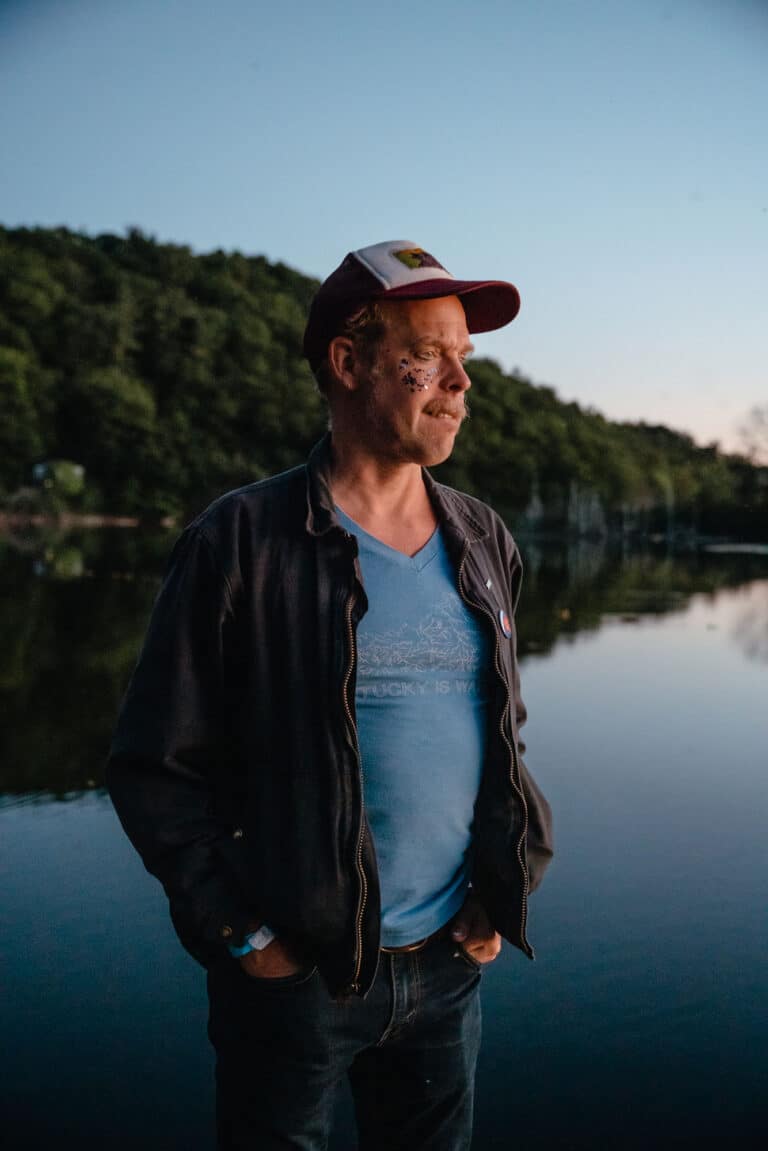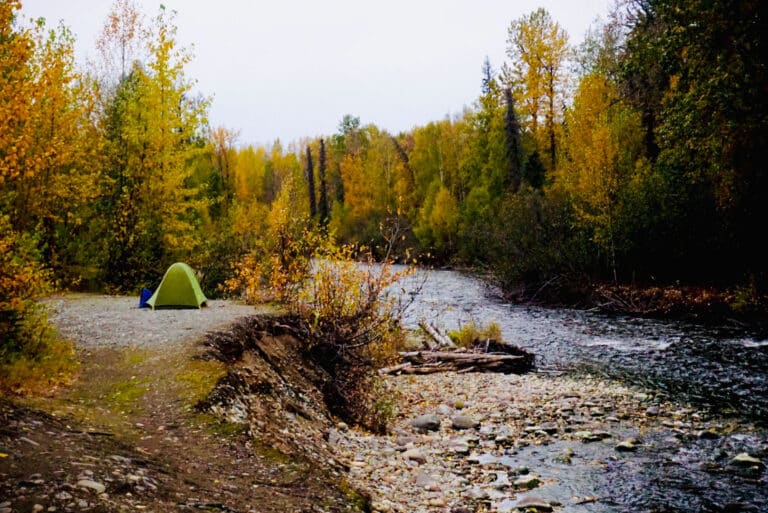Two experienced backpackers, Ryan Baxter and Tyler Wilkerson, met at Caves Cove in blowing snow and single-digit temperatures to embark on a six-day, 72-mile winter Appalachian Trail thru-hike of Great Smoky Mountains National Park.
But this isn’t the story of how these two gents braved the forces of nature and succeeded. In fact, the plan failed. Miserably. Instead, this is the story of a successful failure: how careful planning and strategy can be applied to disaster and still result in triumph.
“Sometimes you have to define success in different ways,” Ryan said. “In this case we succeeded in making it out of the woods with all of our digits intact.”
The ingredients in the recipe for disaster began to stir together almost immediately. First the snow started to fall. As night fell, the snow began falling heavier and faster than expected. At their campsite, they used trekking poles and guylines to set up a tarp over bivy sacks for their minimalist shelter.
 “We knew we were getting weather. We didn’t expect we were going to get as much weather as we did,” Ryan said.
“We knew we were getting weather. We didn’t expect we were going to get as much weather as we did,” Ryan said.
Temperatures never once climbed above freezing and would not rise above 18 degrees for the rest of their hike. Because the temperatures were so low, it took much longer to boil water than it normally would. By morning, they were already low on fuel.
Over a foot of snow slowed their progress. That afternoon they reached Russell Field and assessed their situation. Should they press on to Newfound Gap, some 17 miles away, and hope to resupply or bail out there? Or should they turn back?
Thanks to prior planning, they knew that cell signal was available at Russell Field and they called the ranger station. Bad news: every route, including Newfound Gap, was closed, except for the road to their starting point at Cades Cove.
Had they gone out with planned escape routes but no communication plan, they may have continued on, hoping the snow was over, only to find themselves deep in the wilderness, with diminishing fuel, and approaching escape routes where they would find little help due to closures.
Using cell phones, they were able to call Ryan’s wife, who came to pick them up at Cades Cove. They successfully completed their (failed) journey. No harm, no foul, no lost digits, limbs, or lives. Baxter and Wilkinson are even planning another attempt this winter. Why?
“No bugs, no people. The solitude on a winter backpacking trip cannot be matched the rest of the year. There’s no life out there except for your own. Most of the vegetation is toast. Most of the critters that are out there may be moving around a little bit, but for the most part are hunkered down for the winter, so you get a much different feel for that environment.”
No trip is perfect, but thorough planning can ensure your chances for completing the hike—or just surviving disaster. For two skilled, goal-oriented backpackers, turning back made this snow-shortened trip a surprising success.
The Little Tips That Count
Keep your fuel canister in your sleeping bag to regulate its temperature.
Put boots in a stuff-sack at night will keep them from freezing badly overnight.
Always bring an extra set of keys. Baxter lost his car keys in the snow at Mount Rogers. He spent the next two days getting out of there.
Keep your water bottle in your sleeping bag with you at night to ensure you have liquid hydration in the morning.
If you can bear the weight, snowshoes are always good to have as backup on winter expeditions. Had Ryan and Tyler had them, they would have expended far less energy struggling with footing in deep snow.
Ryan’s Winter-trip Must Haves
- Down Booties
- Down Jacket
- Balaclava
- Gaiters
- Soft-shell/Windproof Pants








